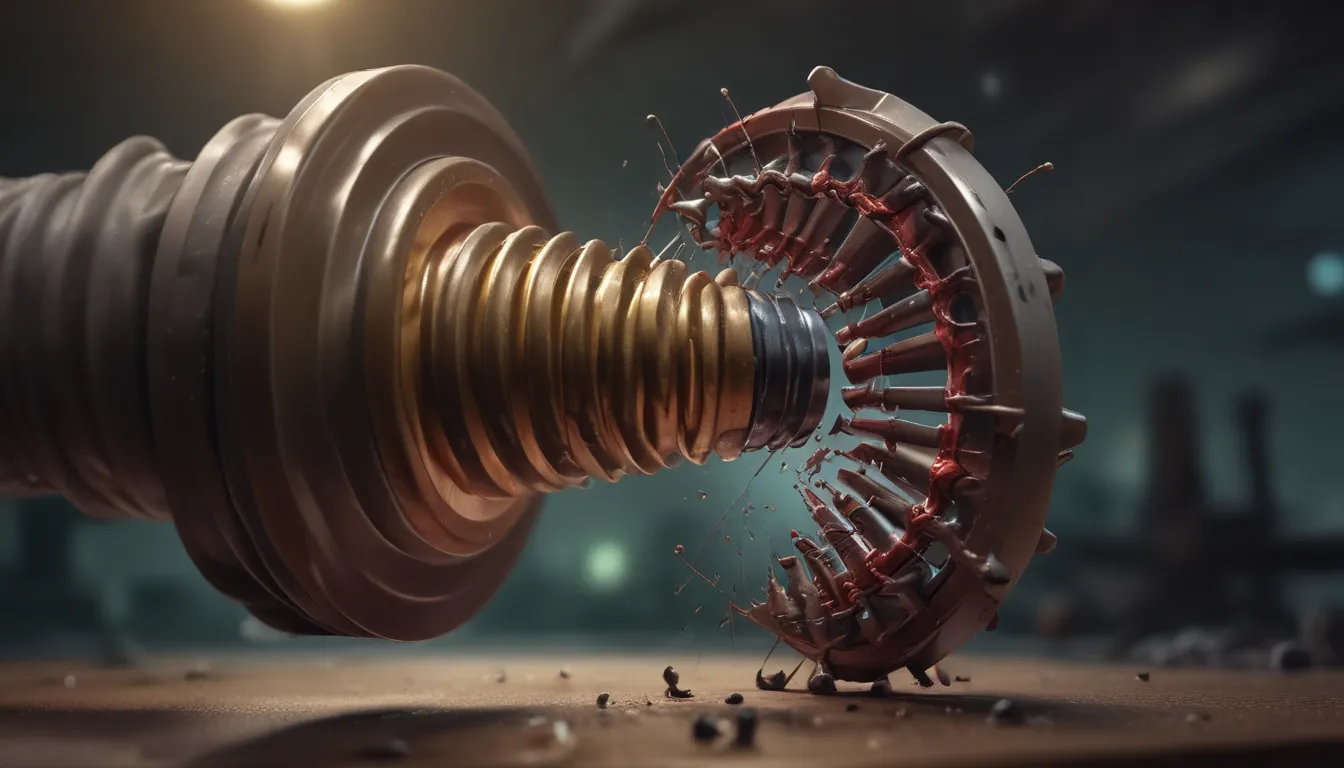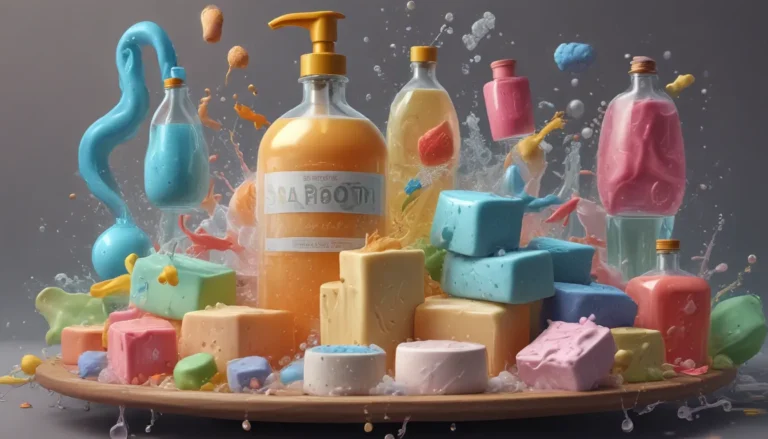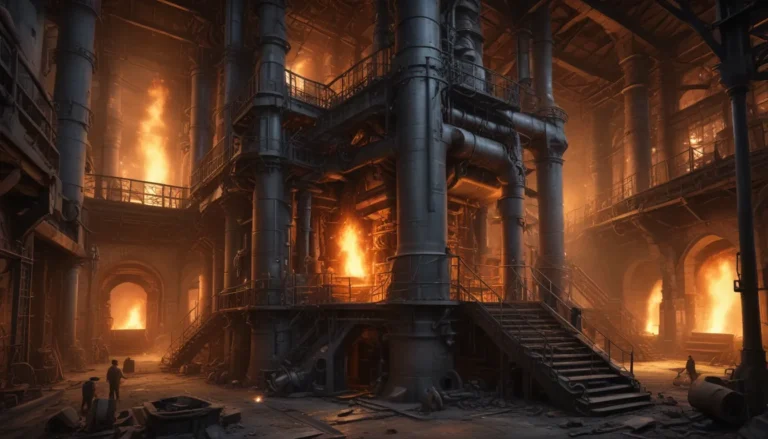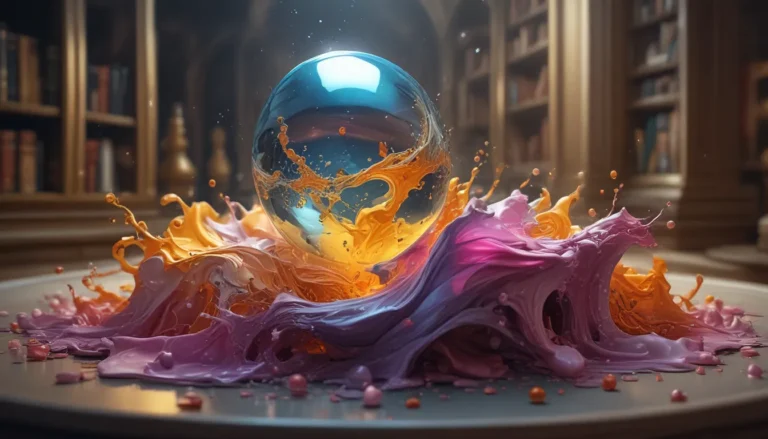A Note About Images: The images used in our articles are for illustration purposes only and may not exactly match the content. They are meant to engage readers, but the text should be relied upon for accurate information.
In the realm of materials science, screw dislocation stands out as a captivating phenomenon that influences the mechanical properties and behavior of materials. This article aims to unravel the complexities of screw dislocations by exploring 15 intriguing facts that will enrich your understanding of materials science and spark your curiosity about the hidden intricacies of the atomic world. Join us on this journey as we delve into the captivating world of crystal defects and uncover the fascinating role of screw dislocations in shaping the materials around us.
Understanding Screw Dislocations
Screw dislocations, tiny defects in the crystal lattice structure of materials, are crucial in determining how materials bend and break under stress. By comprehending screw dislocations, scientists can develop stronger materials, thus enhancing safety and creating more resilient products for a variety of applications.
What Defines a Screw Dislocation?
A screw dislocation is a linear defect in the crystal lattice structure of a material where one part of the lattice is displaced along a specific axis, resulting in a spiral or helical defect in the lattice.
Varieties of Screw Dislocations
There are two primary types of screw dislocations: edge dislocations and screw dislocations. While edge dislocations occur when the lattice is displaced perpendicular to the dislocation line, screw dislocations stem from a parallel displacement along the dislocation line itself.
Influence on Material Strength
Screw dislocations play a pivotal role in determining the mechanical properties of materials, impacting strength, ductility, and fracture behavior based on factors like density, arrangement, and interaction with other defects.
Mechanisms of Screw Dislocations
Movements and Deformations
Screw dislocations can move through materials under stress, aided by continuous shear deformation of atomic planes along the dislocation line. Their role in crystallographic slip, or the sliding of atomic planes past one another, contributes to plastic deformation and shape changes in materials under stress.
Stress Concentration Effects
Screw dislocations can create stress concentration regions known as pile-ups, significantly affecting a material’s mechanical properties and potentially leading to crack initiation and fractures.
Interactions with Other Defects
Screw dislocations can interact with various defects such as vacancies and impurities, influencing material behavior and altering mechanical, electrical, or thermal properties.
Origins and Impacts of Screw Dislocations
Formation and Significance
Screw dislocations can form during manufacturing processes or due to external forces applied to materials. Their intentional introduction through processes like cold working or natural emergence from thermal stresses or deformation contributes to their impact on material properties.
Influence on Crystal Growth
Screw dislocations can influence crystal growth by acting as nucleation sites, promoting the formation of new crystal structures and affecting the orientation of crystalline domains.
Role in High-Temperature Deformation
Playing a crucial role in high-temperature deformation processes like creep, screw dislocations facilitate dislocation motion and enable materials to undergo plastic deformation at elevated temperatures.
Advancements in Screw Dislocation Studies
Techniques for Analysis
Studying screw dislocations is vital for understanding material behavior under various conditions. Techniques like transmission electron microscopy and X-ray diffraction allow for visualization and analysis of screw dislocations to enhance material science knowledge.
Applications in Metals
Screw dislocations are common in metallic materials, significantly influencing mechanical properties. Understanding their behavior is crucial in fields like materials science and metallurgy.
Strengthening Mechanisms
The interaction between screw dislocations and other strengthening mechanisms like grain boundaries and precipitates determines material strength. Manipulating screw dislocation behavior is key to developing stronger materials.
Interactions with Defects
Screw dislocations can initiate and interact with various material defects including cracks, dislocations, and grain boundaries. Understanding these interactions is essential for predicting and preventing material failure.
Embracing the World of Materials Science
Screw dislocations offer a window into the intricate world of materials science, influencing material properties and behavior in profound ways. By unlocking the complexities of screw dislocations, researchers and engineers pave the way for advancements in material design, manufacturing processes, and technological innovation. As our understanding of screw dislocations evolves, new possibilities for groundbreaking advancements in fields like aerospace engineering and nanotechnology emerge, showcasing the endless opportunities for progress and innovation in materials science.
FAQs about Screw Dislocations
- What is a screw dislocation?
-
A screw dislocation is a defect in a crystal lattice where shear deformation occurs along a specific atomic plane, resembling the movement of a screw threading into a material.
-
How are screw dislocations formed?
-
Screw dislocations are formed when one part of a crystal lattice is displaced relative to another along a shear plane, leading to a misalignment of the lattice structure.
-
What is the role of screw dislocations in material strength?
-
Screw dislocations impact material strength by impeding the movement of other dislocations within the material, creating resistance to deformation and contributing to hardness and strength.
-
How do screw dislocations facilitate movement in dislocation creep?
-
Screw dislocations act as channels for the flow of atoms in dislocation creep, providing a pathway for the material to deform plastically and withstand high-temperature and high-stress conditions.
-
What techniques are used to study and visualize screw dislocations?
- Techniques like transmission electron microscopy, atomic force microscopy, and X-ray diffraction are employed to study and visualize screw dislocations, enabling scientists to observe and analyze their behavior at a nanoscale level.
In conclusion, screw dislocations are an integral part of materials science, shaping the mechanical properties of materials and providing insights into material behavior under different conditions. By delving into the intricacies of screw dislocations, researchers and engineers can pave the way for innovative solutions, enhance material properties, and drive progress across various industries. Let the world of materials science inspire you to explore, learn, and uncover the fascinating secrets that lie within the realms of crystal defects and material phenomena. Trust in our commitment to quality and authenticity as you embark on a journey of discovery in the captivating world of materials science.






